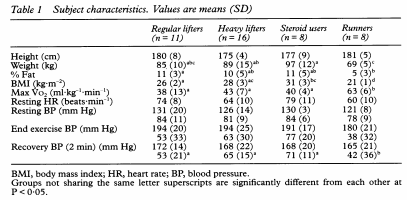Just when I thought we had reached
the end of the Steroid Era, Ryan Bruan, the Milwaukee Brewers’ star left fielder
faced a 50 game suspension for violating Major League Baseball’s performance
enhancing drug policy. As a Cubs fan, my initial reaction was excitement, as
the Brewers face them nearly 20 times per season within the National League
Central Division. However, as more and more players fail drug tests, including
potential Hall-of-Famers, the sport is becoming tarnished. With the strictest
drug policy in sports, minus the Olympics, players still try to beat the
system. I find it quite ironic that steroids are now destroying a sport and its
athletes, about a decade after saving it and bringing fans back.
During the
mid-1990s, Major League Baseball reached a new low in popularity due to a
strike-shortened season caused by labor disputes. However, fans quickly returned
during the 1998 season when Ken Griffey Jr., Sammy Sosa and Mark McGwire began
hitting homeruns at a greater pace than ever before. The league was now as
popular as ever because of this new, higher scoring, faster paced style of
play. While this statistic has slowly
been on the rise since the sport began, we have never before seen such a
drastic increase. To be sure that my mind wasn’t playing tricks on me, I
decided to find out exactly how many homeruns were being hit compared to the
past. Sure enough, the total had nearly doubled since 1992 when there were
approximately 0.7 hit per game, while almost 1.2 were being hit in by the year
2000, as seen in the figure below. Not only were more homeruns being hit, but the
average length of them was increasing as well.
 This spike in
productivity during the late 1990s is probably just a coincidence, right? Wrong!
During the 1998 season, a jar of androstenedione (seen in the jmol below), a steroid precursor was
discovered in Mark McGwire’s locker. He would later admit that he used the precursors,
which helped him to break the single season homerun record, with 70.
Unfortunately, at that time, steroids and precursors were not yet banned. Also,
famed steroid abuser Jose Canseco came clean in his tell all book “Juiced”
during the 2005 season, shortly after rumors began circulating about the
allegations around the league. In his book, he ratted out every player that he
knew used performance enhancing drugs, leading to a congressional hearing with
some of the game’s best. With each player providing short, indirect answers, it
could only be assumed that they were silently admitting guilt. Due to the large
numbers of accusations and uncertainty, nearly every player who performed at a
high level is met with some question. Throughout this process I had no idea how
steroids worked, and what they did to the body. Nearly all of the talk
suggested that steroids were a good thing, helping players grow to enormous
sizes. However, I wanted to know how this unnatural means of muscle growth
negatively affected the body as well, specifically on a molecular level.
This spike in
productivity during the late 1990s is probably just a coincidence, right? Wrong!
During the 1998 season, a jar of androstenedione (seen in the jmol below), a steroid precursor was
discovered in Mark McGwire’s locker. He would later admit that he used the precursors,
which helped him to break the single season homerun record, with 70.
Unfortunately, at that time, steroids and precursors were not yet banned. Also,
famed steroid abuser Jose Canseco came clean in his tell all book “Juiced”
during the 2005 season, shortly after rumors began circulating about the
allegations around the league. In his book, he ratted out every player that he
knew used performance enhancing drugs, leading to a congressional hearing with
some of the game’s best. With each player providing short, indirect answers, it
could only be assumed that they were silently admitting guilt. Due to the large
numbers of accusations and uncertainty, nearly every player who performed at a
high level is met with some question. Throughout this process I had no idea how
steroids worked, and what they did to the body. Nearly all of the talk
suggested that steroids were a good thing, helping players grow to enormous
sizes. However, I wanted to know how this unnatural means of muscle growth
negatively affected the body as well, specifically on a molecular level.
After doing some
research, I was able to find that anabolic-androgen steroids (AAS) are
substances that mimic the effects of testosterone in the body. To put it
simply, steroids increase protein synthesis, resulting in increased muscle
production and masculinized secondary sexual characteristics. Testosterone
enters the cell through the cellular membrane, due to its hydrophobicity, and
binds with high affinity to an androgen receptor on the nucleus. Testosterone
can also be transformed into dihydrotestosterone, a more active compound, or
estradiol, through the catalyzing effects of the enzymes 5-alpha-reductase and
aromatase, respectively. The diagram below shows the different possible routes of testosterone after it enters the cell. These compounds bind to receptors as well in a similar
fashion. After the formation of the steroid-receptor complex, protein synthesis
is stimulated by interaction with RNA and DNA. 5-alpha-reductase activity is
found most commonly in male accessory sex glands, skin, the prostate, lungs,
brain, fat cells, and bone. Therefore, these organs react more readily to AAS.
Conversely, aromatase is more commonly seen in females for the creation of
female sex hormones, estradiol and estrone. This enzyme is most commonly found
in fat tissue, Leydig and Sertoli tissue, and in some central nervous system
nuclei. All of this new information explained the process on a molecular scale,
but I also wanted to know what happened on a larger scale. How were these
athletes able to build such a ridiculous amount of muscle, so quickly?

The same article
explained that AAS-induced increases in muscle mass were caused by muscle
hypertrophy and the formation of new muscle fibers. Also, the process of muscle
fiber growth seemed to involve the incorporation of satellite cells into
existing fibers to maintain constant nucleus to cytoplasm ratios. This allows
each fiber to produce the same amount of protein for muscle production per unit
volume. Furthermore, certain muscles, but not all, are stimulated to produce
more androgen-receptor containing myonuclei. Also, administration of AAS was
associated with an increase in satellite cell number, changes in satellite cell
ultrastructure, and a proportionate increase in myonuclear number. Recovery
time after workout is also decreased. This helps to explain regional
differences in body changes.
Interestingly
enough, other growth factors are also involved with the process of hypertrophy.
For example, growth hormone (GH) replacement also improves muscle mass in
adults, without significant impact on muscle strength. This would support the
idea that GH makes athletes larger without improving abilities. However, the
key vector for androgen-associated muscle hypertrophy appears to be the
satellite cell. The following diagram outlines the different possible outcomes of steroid use, and some of the different molecules involved, leading to muscle hypertrophy.
After reading
about all the positives about steroids, I began to wonder, why don’t all
athletes take advantage of these amazing drugs? That’s when I started to read
about all the adverse effects caused by steroids. One major, yet obvious effect
is seen in the reproductive system. This occurs because exogenous administration
of AAS disturbs the body’s production of testosterone and gonadotrophins (LH
and FSH). The ladder induces testicular atrophy and reduces semen quality and
quantity. This can lead to infertility within months. An additional concern
found with steroid abusers is hepatic effects. Liver disturbances and other
diseases have been found to be associated with AAS, even in young, healthy athletes. The type most commonly
associated with these conditions are 17-alpha-alkylated steroids such as methyltestosterone,
oxymetholone, fluoxymesterone, norethandrolone, and metandienone. While each of
these conditions are terrible, there is one in particular that I was
interested in exploring: altered mental states/behaviors.
Case reports have
shown that self-administration of AAS is associated with the occurrence of
schizophrenia, steroid dependence, affective and psychotic symptoms, and
homicide. Other symptoms that have been reported include hypomaniac episodes,
violent murder, child abuse, and spousal battery. These cases are most likely
attributed to an increase in aggression and hostility, along with mood swings,
which are all related to levels of testosterone. Interestingly enough, it has
also been shown that many steroid users often do so because of a previously
unrecognized lack of self-esteem. Often called reverse anorexia, and later
called muscle dysmorphia, these individuals believe they have small,
disproportionate bodies that need an increased muscle mass. This pathological
preoccupation with their degree of muscularity increases the susceptibility of
steroid use. In addition, steroid users possess a narcissistic personality
relative to non-users. My source went on to conclude that supratherapeutic
doses of AAS may increase muscular strength and lean body mass, leaving
endurance performance and fat mass unaffected. This could be why athletes in
more cardiovascularly strenuous activities such as running or basketball,
refrain from taking part in this activity.
With
all of this new information at my finger tips, I knew that steroids clearly had
a negative impact in the body. Nevertheless, I wanted actual numbers to back up
some of the findings. I needed to know to what extent steroids destroyed the
body. I was able to find a study that compared different statistics among
regular weight lifters, heavy lifters, steroid users, and runners. An effect
seen in steroid abusers is increased blood pressure. This could be potentially
caused by a larger left ventricular mass, larger posterior wall and larger
interventricular septum thickness. Additionally, steroid users experienced a
slower recovery in blood pressure after finishing an exercise. However, this
appeared to be dose related, as some subjects experienced fewer effects with smaller
injections. Finally, steroid users are at a much greater risk for cardiac
disease caused by lipoprotein cholesterol. Compared to the other three test
groups, steroid users had much higher levels of total cholesterol, LDLs
(Low-Density Lipoprotein), and triglycerides. They also had lower levels of
high-density lipoproteins, which are considered “good” cholesterol. LDLs are
responsible for transporting cholesterol into the artery wall, leading to the
formation of plaque, and eventually atherosclerosis, heart attack, stroke, or
peripheral vascular disease. Each value that I mentioned can be explicitly found in or inferred from the tables below.
When I finally
came to terms with the idea that most athletes are money hungry cheaters, Ryan
Braun’s suspension was overturned. There were alleged problems with the chain
of custody of his urine samples, causing them to be invalid and not suitable
for testing. Somehow a judge found this excuse to be good enough, even though
no seals were broken, and Ryan Braun willingly gave his signature every step of
the way. Even with no experts agreeing with his case, the judge believed that
the samples could have elevated levels of testosterone just by sitting in a
man’s apartment for an extra 48 hours. This was the first time any player had
been relieved of a suspension after appealing. I am now forced to watch a
likely steroid user tear apart Cubs pitchers, when he really should be
suspended.
Resources
http://www.afboard.com/library/Effects%20of%20Androgenic-Anabolic%20Steroids%20in%20Athletes.pdf
http://jcem.endojournals.org/content/91/1/320
http://www.eje-online.org/content/128/4/313.abstract
http://bjsm.bmj.com/content/37/2/100.full.pdf+html
http://msscentershop.info/content/30/1/11.full.pdf+html
http://milwaukee.brewers.mlb.com/news/article.jspymd=20111210&content_id=26144628&vkey=news_mil&c_i d=mil
http://www.sabernomics.com/sabernomics/index.php/2006/05/pictures-of-deception/
http://thesteroidera.blogspot.com/2006/08/baseballs-steroid-era-timeline.html
http://joe.endocrinology-journals.org/content/191/2/349.full.pdf+html







No comments:
Post a Comment